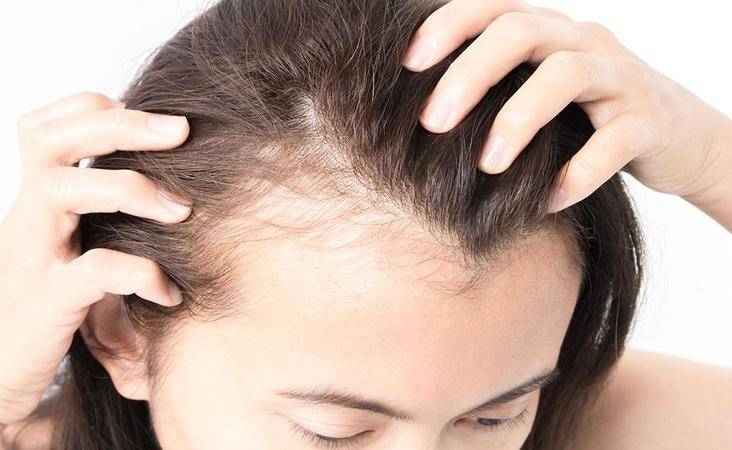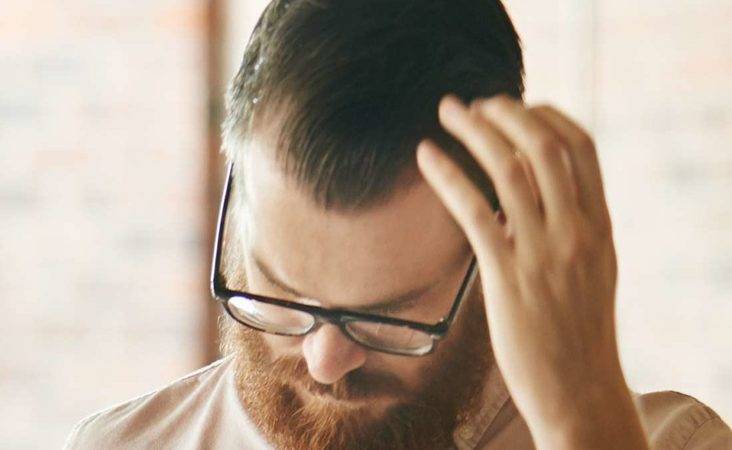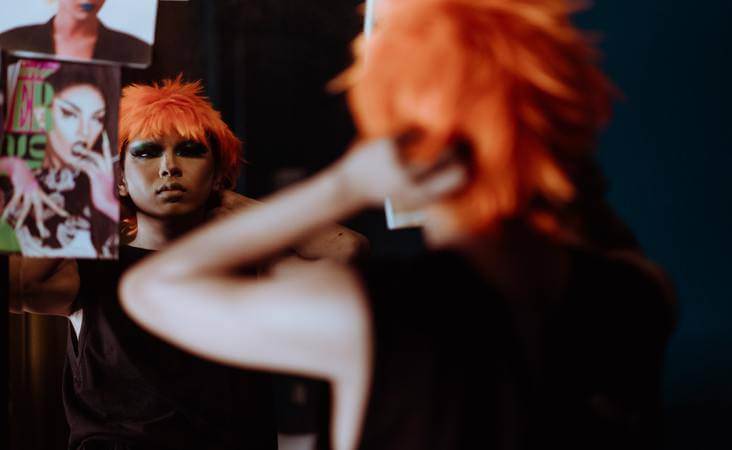Traction Alopecia: Meaning, Causes, Regrowth and Treatments
- Written by Lordhair Team
- Sep 29, 2021
- |
- 11 min read
 Listen to the full text
Listen to the full textWe all feel like pulling our hair out in exasperation when coming across a difficult situation but we rarely do it in real life. Interestingly, a lot of us unknowingly indulge in a hair-pulling practice that's more damaging. The it's called traction alopecia in medical circles and is the term used for hair loss caused by tightly pulled hairstyles.
Not many men and women are aware of this type of hair loss. That’s the reason why most fail to take the right hair regrowth measures on time. In this blog, we will discuss everything you need to know about traction alopecia. From meaning to symptoms and regrowth to treatments, we will cover all the crucial aspects.
Let’s start by understanding the meaning first:
What’s traction alopecia?
Traction alopecia is a type of hair loss that is triggered by the continuous pulling force on hair roots over a long period of time. Although it occurs more in women, it’s also being reported by men with medium or long hair.
According to dermatologists, the unceasing strain on hair follicles pulls out strands and damages the follicles. Traction alopecia can result in permanent hair loss and bald patches if not treated in time.

Signs of traction alopecia
Men and women who have fallen prey to traction alopecia might notice little bumps (just like blisters) on their scalp in the beginning. As the hair condition worsens, they begin noticing hair on their pillow, towel, or comb.
While the strands along the front and sides of the scalp are most affected by traction alopecia, bald patches in the other areas of the scalp may also appear depending on the hairstyle.
Think extreme hair shedding is the only symptom of traction alopecia? Wrong! It can also be identified through the following symptoms:
- Redness of scalp
- Short, broken hair around the forehead
- Soreness or wounds on your scalp
- Itching
- Inflammation of hair follicles
- Pus-filled blisters
Lordhair recommends seeing a dermatologist if you are facing one of these traction alopecia symptoms.

Traction alopecia causes
As already outlined, traction alopecia has a large chance of appearing when we tie our hair up too tight. Pulling on the strands continuously for hours unclasps the hair shaft in its follicle. A lot of men and women face traction alopecia due to:
Ponytail and bun hairdos
We know what you are thinking. “How come simple hairstyles like a ponytail and bun hurt my hair?” Well, wearing a ponytail or bun for a day isn’t going to make your strands fall out. But wearing them too tightly, very frequently, and month after month increases the chance of this hair condition.
Top hair experts have confirmed that ponytails and buns exert pressure on the hair follicles and strands. They also stress the hair follicles around your hairline and eventually pull the strands out.
CCCA alopecia also causes extreme hair loss. Learn about the condition
Braids, cornrows, and deadlocks
When worn over a long period of time, tight braids, cornrows, and dreadlocks can pull out hair in clusters. Just like ponytails and buns, they create too much tension and stress on the opening surface of the skin through which hair grows. In some cases, they permanently dislodge hair from the scalp, resulting in permanent hair loss.
Tight hair wigs and extensions
Another popular cause of traction alopecia in men and women! Hair wigs and extensions are not meant to be tight at all. They should only guarantee a firm position on the head. Too tight and it will start causing hair pulling.
Hair pulling caused by a tight hair wig or extension results in discomfort and pain. It can also damage the surface layer of hair follicles. No matter how premium your hair wig or extension is, it shouldn't cause any discomfort. Else, traction alopecia will come knocking at your door.

Hair in rollers every night
Hair rollers are widely used by women to get curls but are they safe enough to leave overnight? The answer is NO! Most rollers stress the hair strands and can be very damaging, especially if your hair is already fragile.
If your hair is wound too tightly around curlers and is left like that overnight month after month, there is a high chance that it will cause breakage along the hair shaft or worse, even from the root.
Hair regrowth treatments for traction alopecia
The following are the best treatments and hair regrowth advice to get rid of traction alopecia:
#1 Change your hairstyle
As we said, traction alopecia is caused by stress put on your scalp by tight ponytails, braids, cornrows, deadlocks, and buns. So, avoid wearing them if this hair condition is showing early symptoms. Instead, opt-in for low-stress easy-to-wear hairstyles that reduce the ‘pull’ on the hair strands.
Men and women with medium or long hair can try these hairstyles to avoid traction alopecia and stimulate hair growth:
- Messy updos
- The wavy, textured loose hairstyle
- Loose braid
- Classic shoulder-length haircut
- Bob hairdo
Even if you have to put your hair into a ponytail or a bun, make sure to keep it loose and low on your head.
<IMG-4>
#2 Minoxidil
Minoxidil is one of the best treatments for traction alopecia. It can help regrow your hair and even stop further hair loss. Males are advised to apply 1ml of a 2% or 5% solution (depending on your hair loss condition) to affected areas of the scalp.
Females, on the other hand, are suggested to apply only 2% of the Minoxidil solution on their scalp. We also recommend you to take a prescription from a dermatologist since Minoxidil has its share of side effects!
Here are some known side effects of Minoxidil:
- Acne at the site of application
- Itching or skin rash
- Reddened skin
- Swelling
- Dizziness
- Chest pain
Minoxidil side effects and alternatives to aid quick recovery
#3 Hair wigs
If your hair loss has become extreme due to traction alopecia and there are visible bald patches, wear wigs for women for a quick recovery. Nowadays, wigs are constructed using real human hair hand-woven onto a base made of premium skin-friendly materials.
Attached using clips or tape, modern wigs mix perfectly with real hair and provide an ultra-realistic look.
Benefits of hair wigs
While there are many benefits of using a hair wig for hair recovery, we have listed only the best ones:
- Instant change in the overall look
- Affordable and practical recovery solution if your hair loss is extreme
- Realistic and comfortable to wear
Check out how wonderful Kelly looks after wearing a hair wig:
Men with traction alopecia can check out our collection of men’s hair pieces
Defeat traction alopecia with Lordhair
Above are the best treatments for traction alopecia. Remember, this hair loss condition is totally reversible in the early phase. If your hair strands don’t grow after a few months of recommended recovery options, then, your hair follicles might be damaged.
We recommend buying a hair toupee if medication and styling changes don’t help. Browse our growing catalog of wigs for women and hair systems for men to shop for premium hair recovery products.
Got any queries to ask? Send them to support@lordhair.com. Our hair experts would be more than happy to answer them for you!
Check out our recent blogs and product collections:
Browse human hairpieces for men and women
Learn how to stimulate hair growth and follicles
Browse volume wigs for men and women
High-quality toupees for buy in 2021
![]() Email: support@lordhair.com
Email: support@lordhair.com
![]() Tel: +86 532 80828255
Tel: +86 532 80828255
![]() WhatsApp: +86 186 7861 5507
WhatsApp: +86 186 7861 5507
![]() Skype: Lordhair
Skype: Lordhair
Find us on social media





